After posting this morning about all the injured and lame e-Divvy bikes around Chicago, a Daily Parker reader just sent me this story from last November, reporting that Divvy planned to (and presumably did) switch its maintenance subcontractor on February 1st of this year:
Periodically we do a [Request for Proposals]," the Lyft staffer said. "We want the best operations and service delivery for our city partners and customers. Motivate's contract was running out on February 1, so we held a competitive procurement process. Both Motivate and Shift were interested in the new contract. Shift runs bike-share systems in Toronoto, Detroit, and Portland, Oregon." Shift also currently operates Divvy's electric scooter fleet.
There's evidence this management switch could be good news for Divvy riders. The system's recent challenges with out-of-service bikes and ineffective rebalancing are well-documented. And then there was the embarrassing July 2022 spotting of a massive number of dysfunctional Divvies sitting in a vacant lot across the alley from the bike-share system's service warehouse at 2132 W. Hubbard St. in West Town. That was definitely not a good look for Motivate, which was managing Divvy's bike maintenance operations at the time.
While the machinations going on right now at Divvy are a little complex, there's no reason to believe they'll be bad for customers or employees.
I mean, except for the transition period, one supposes...
Divvy, Chicago's bike-share program, seems to have some issues lately. For about two weeks now, almost no electric bikes have shown up on the app. This one, for example, clearly needs some TLC, and it's invisible online:
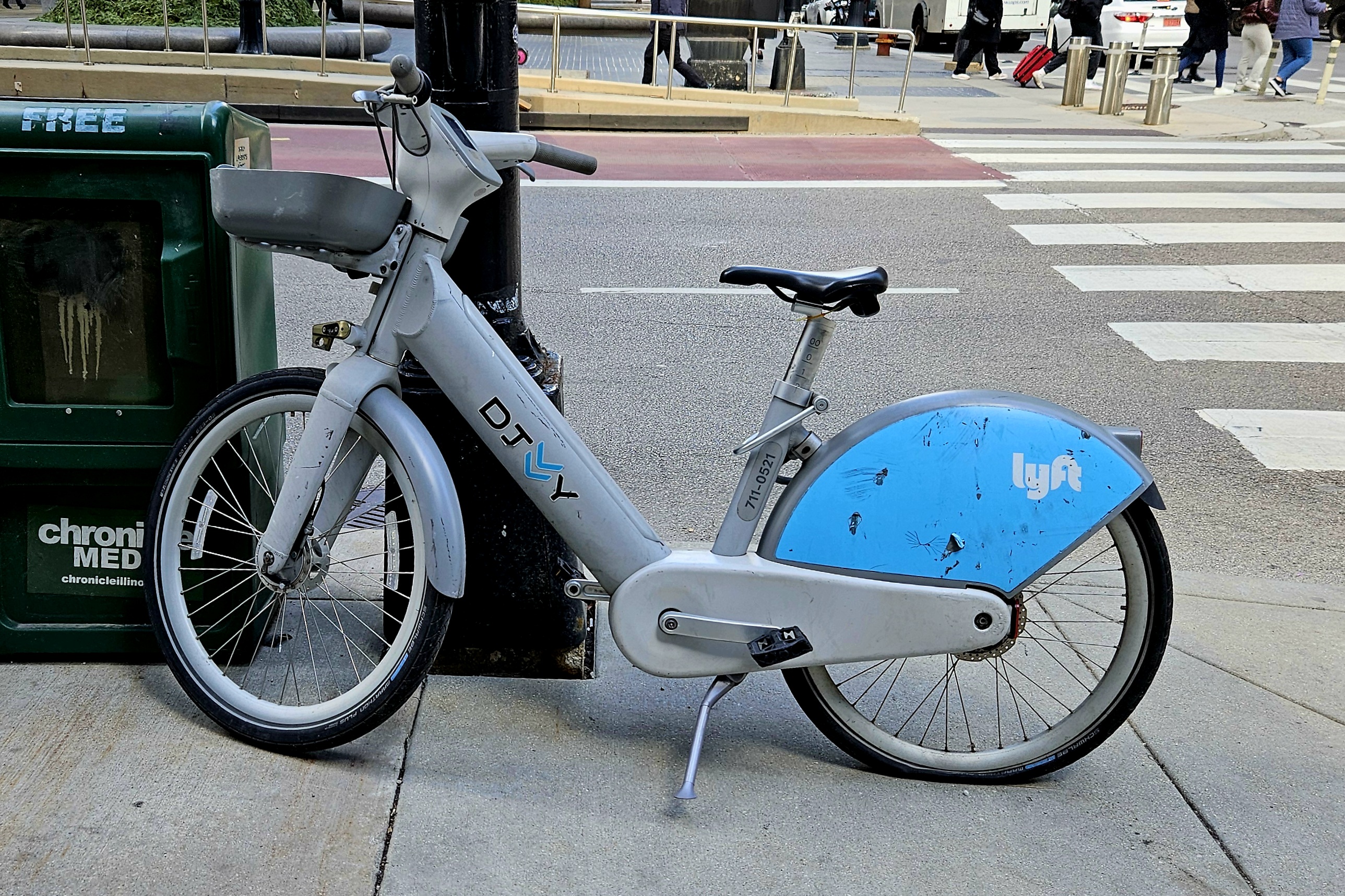
I counted half a dozen in my neighborhood that have dead batteries. My friends in other neighborhoods describe similarly grim situations, or worse: one rack in Lakeview had nothing but broken bikes, and showed 0 available on the app.
Divvy's Twitter feed doesn't provide much insight, either. They can only repeat "we'll have our Operations Team check it out!" so many times before it becomes self-parody.
On top of the subscription price increase that took effect last week, I and other users have gotten a bit annoyed. Divvy, what gives?
Another sprint has ended. My hope for a boring release has hit two snags: first, it looks like one of the test artifacts in the production environment that our build pipeline depends on has disappeared (easily fixed); and second, my doctor's treatment for this icky bronchitis I've had the past two weeks works great at the (temporary) expense of normal cognition. (Probably the cough syrup.)
Plus, Cassie and I have a houseguest:

But like my head, the rest of the world keeps spinning:
- A 3-judge panel on the DC Circuit Court of Appeals has ruled that presidents do not have blanket immunity from prosecution, which the XPOTUS has vowed to appeal en banc and then to his hand-picked Supreme Court.
- The Republican Party got the border deal they asked for, but they refuse to pass it because the XPOTUS needs border chaos for his re-election campaign. Greg Sargent has even more about their own-goal.
- Los Angeles experienced record rainfall yesterday, with a whopping 104 mm of rain recorded downtown, smashing the old record of 65 mm set in 1927.
- Here in Chicago, we expect above-average temperatures to hang out for the rest of winter, possibly even hitting 16°C later this week.
- That means we won't get to see the winners of this year's snowplow-naming contest: Skilling It, CTRL-SALT-DELETE, Casimir Plowaski, Ernie Snowbanks, Mies van der Snow, and Bad, Bad Leroy Plow.
- Speaking of roads, the Sun-Times ran an essay today outlining the history of Chicago expressways (motorways), and what we lost when we built them.
And now, my production test pipeline has concluded successfully, so I will indeed have a boring release.
Welcome to stop #101 on the Brews and Choos project.
Brewery: Eris Brewery & Cider House, 4240 W. Irving Park Rd., Chicago
Train line: Union Pacific Northwest, Irving Park (Zone 2) (also CTA Blue Line, Irving Park)
Time from Chicago: 13 minutes
Distance from station: 300 m
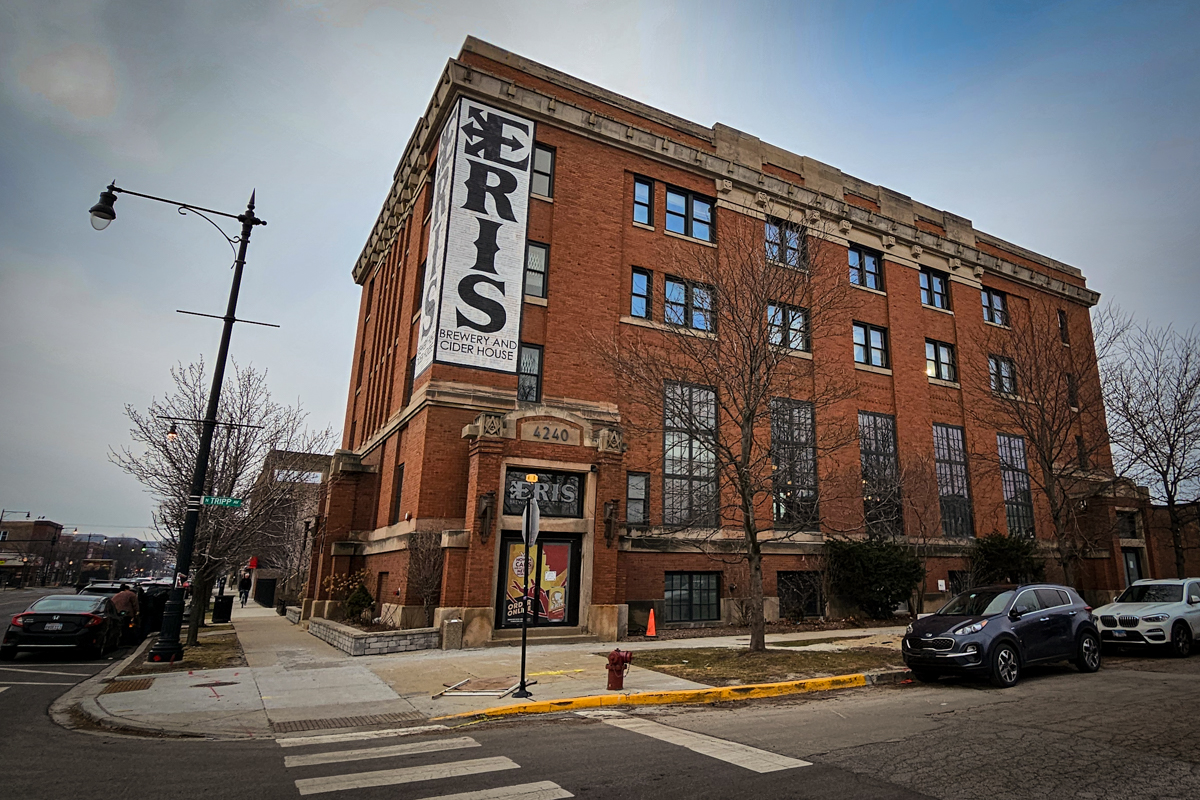
Built out of a former Masonic temple in the Old Irving neighborhood, Eris has really good food and really good cider. At this writing, though, they're still working on their beer game. On top of some of the best cheese curds and French fries I've had at a brewpub, I tried two 120-mL pours and had a of sip of one selection from my friends' "pepper" flight.
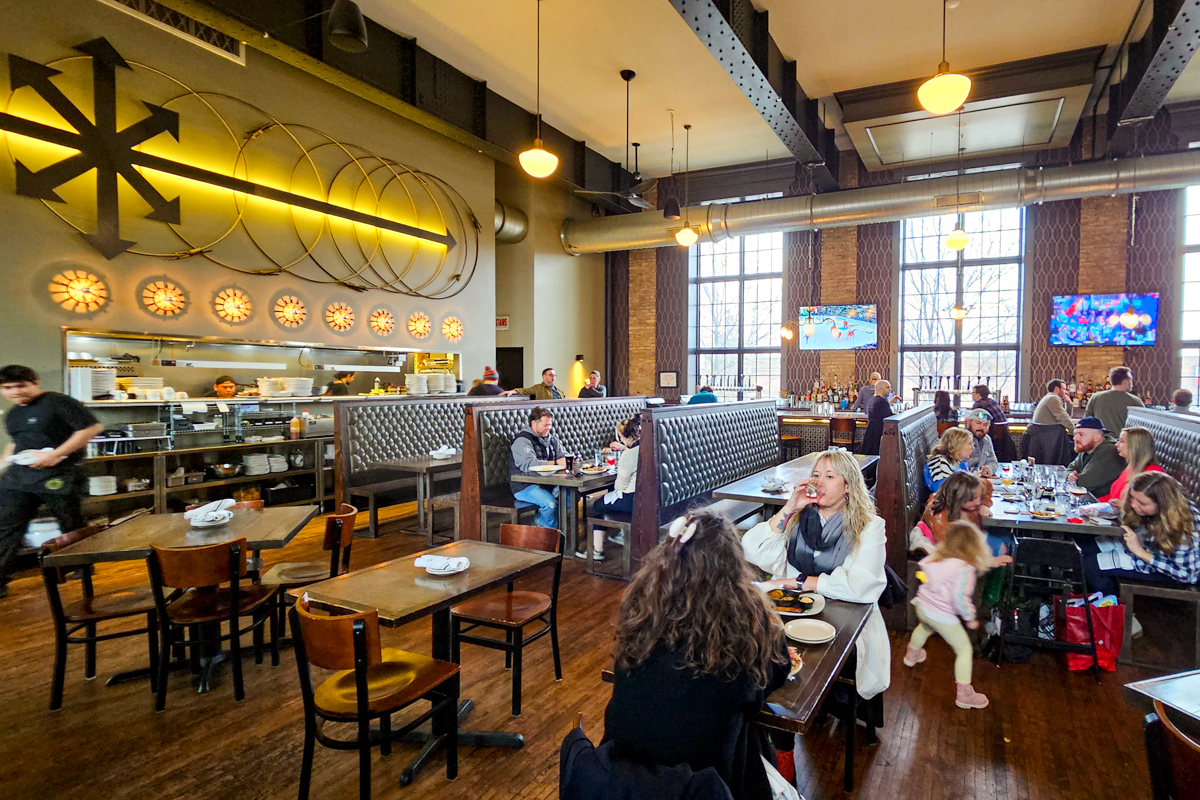
The Pedestrian cider (5.9%) was nice & dry, with crisp apple flavor, better than its name suggests. Would love to sit outside with this in the summer. The Waka Waka hazy IPA (6.8%) didn't work for me, though. Perhaps because I started with the cider, it had none of the fruit flavor that I'd expect from a Citra-hazy ale. My friend really liked the pepper flight, so I had a sip of the Hot Chaos pepper cider (6.3%) with árbol chile, and will not be having more. But I can see the appeal.
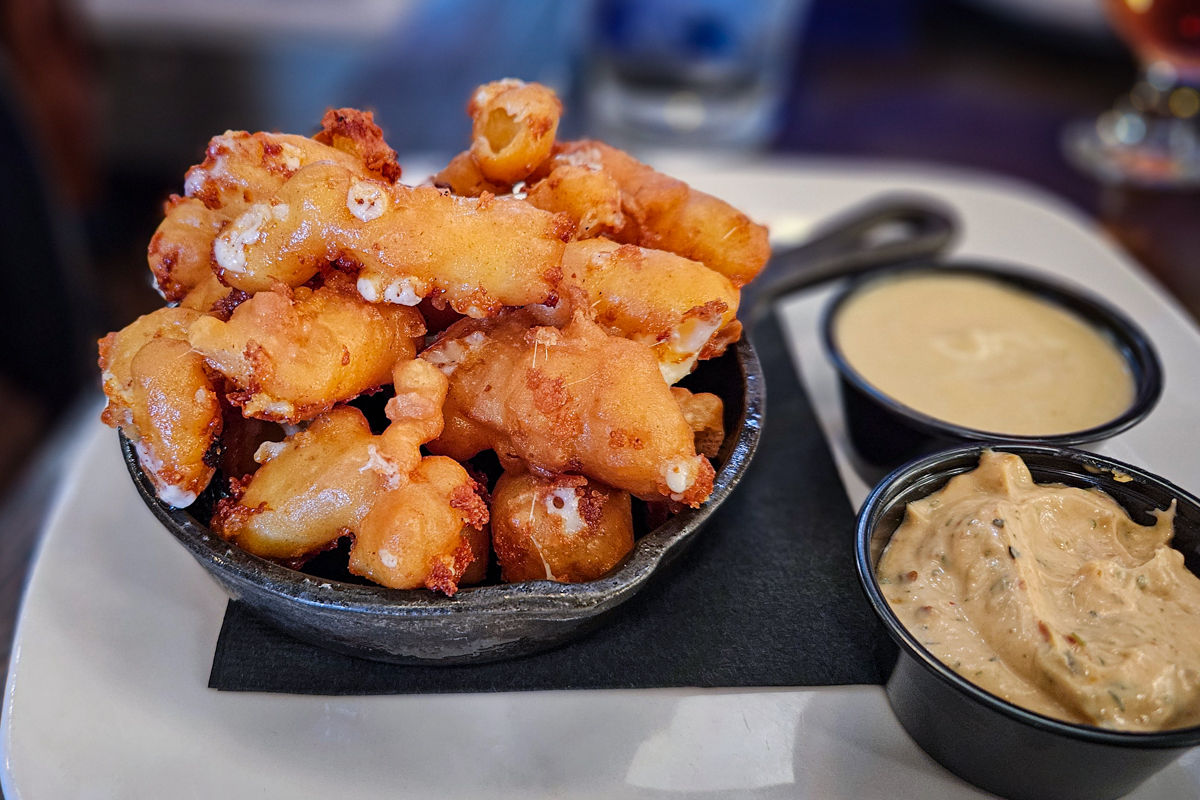
We'll be back, in the summer, with the dogs.
Beer garden? Yes
Dogs OK? Outside only
Televisions? Many, avoidable
Serves food? Full menu
Would hang out with a book? Yes
Would hang out with friends? Yes
Would go back? Yes
Welcome to stop #100 on the Brews and Choos project.
Brewery: Illuminated Brew Works, 6186 N. Northwest Hwy., Chicago
Train line: Union Pacific Northwest, Norwood Park (Zone 2)
Time from Chicago: 22 minutes
Distance from station: 400 m
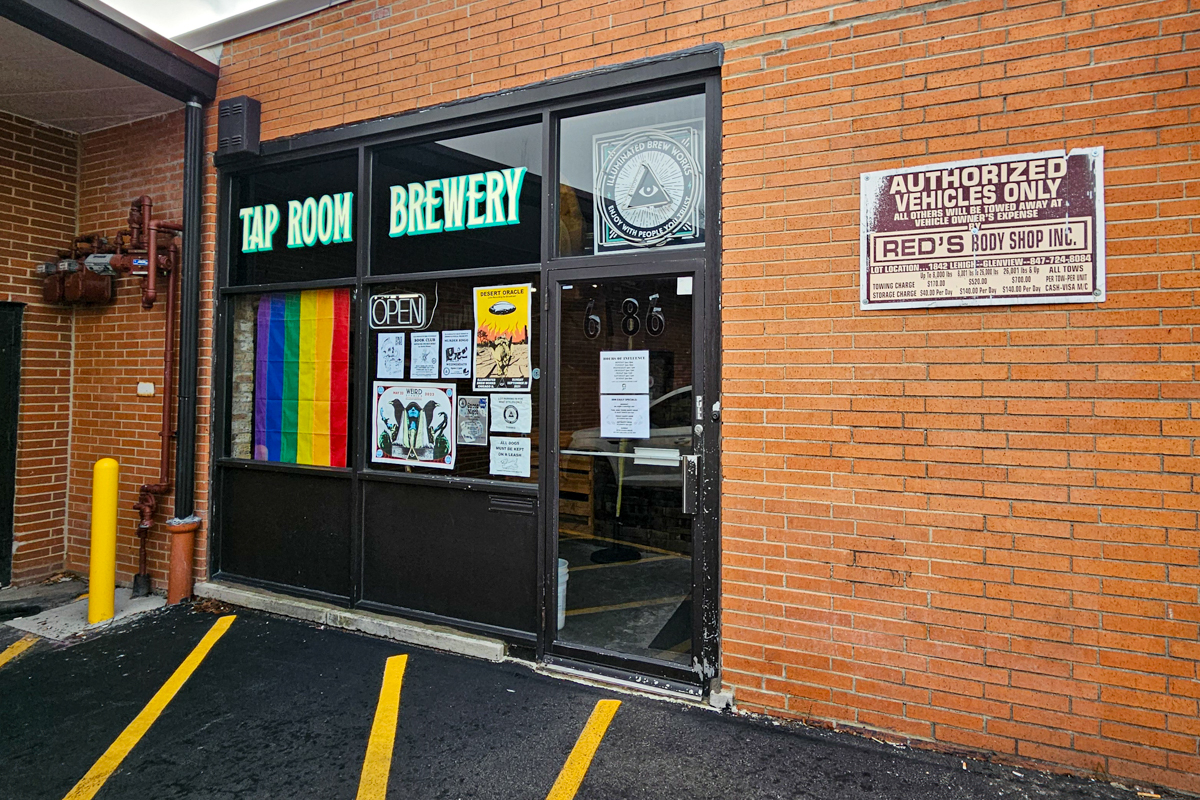
It only took four years and a pandemic to get to the 100th Brews & Choos stop. When I stopped at Macushla in Glenview almost exactly four years ago, I thought I'd knock out all 90 or so breweries and distilleries in about 18 months. We all know what happened a month later...
Here we are at stop #100, and I'm happy to report it garnered a "would go back" rating.
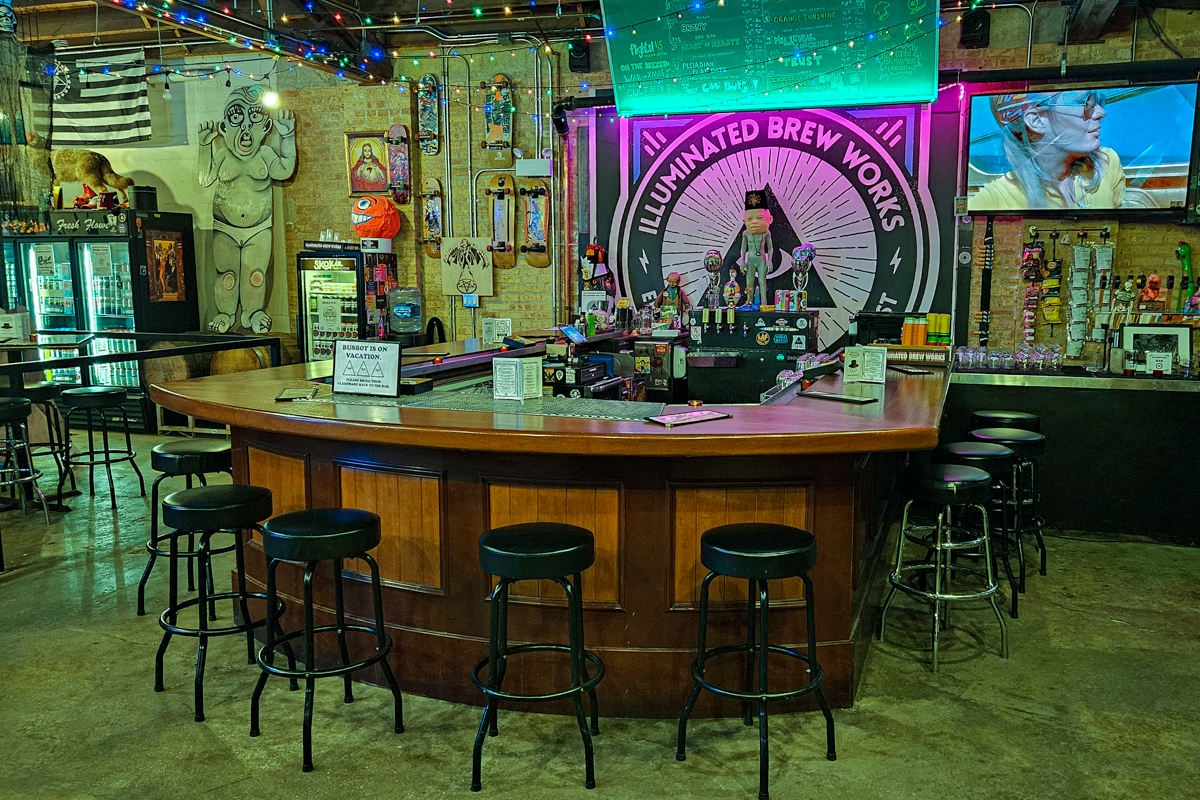
Illuminated Brew Works has a bit of fun with its namesake, even calling its mailing list a "cult." They make really good beer, and they allow dogs, but fortunately no one tried to convert me to Belgian sour ales.
In fact, as I have a touch of bronchitis, I didn't drink much at all. The 120-mL pours I had were excellent. The Brony DDH DIPA (7.5%) was really smooth, and didn't taste at all like the strong beer the menu says it is. And the Millennial Munchies stout (13.5%), which I shared, was complex, sweet but not cloying, with malty coconut and chocolate notes.
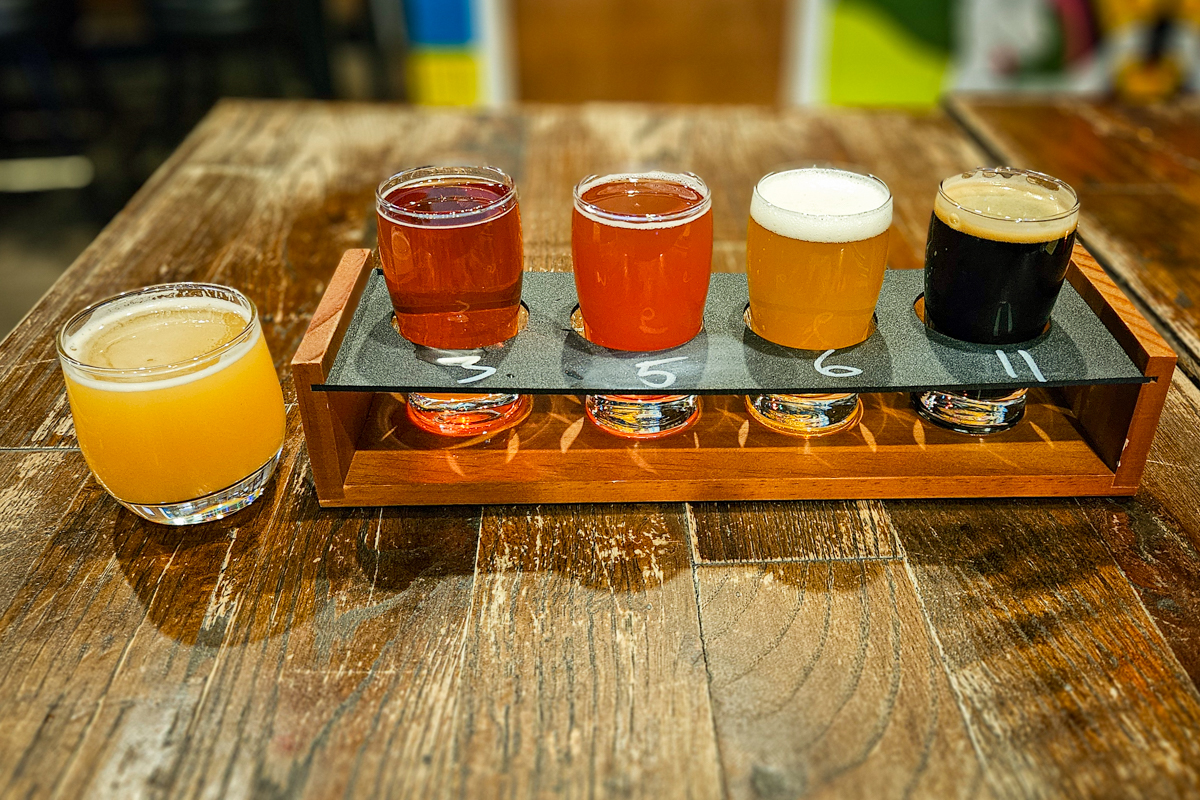
I also had a sips of my friend's beers. The CULT stout (10%), which had real complexity but not a lot of sweetness, and the guajillo chiles they brewed it with really smacked me in the end. I didn't feel I could evaluate the Cherry Brainwash sour (7%) and Orange Sunshine Saison (5.4%), as I'm not a fan of those styles, but my friend assured me they were excellent, and particularly liked the cherry sour.
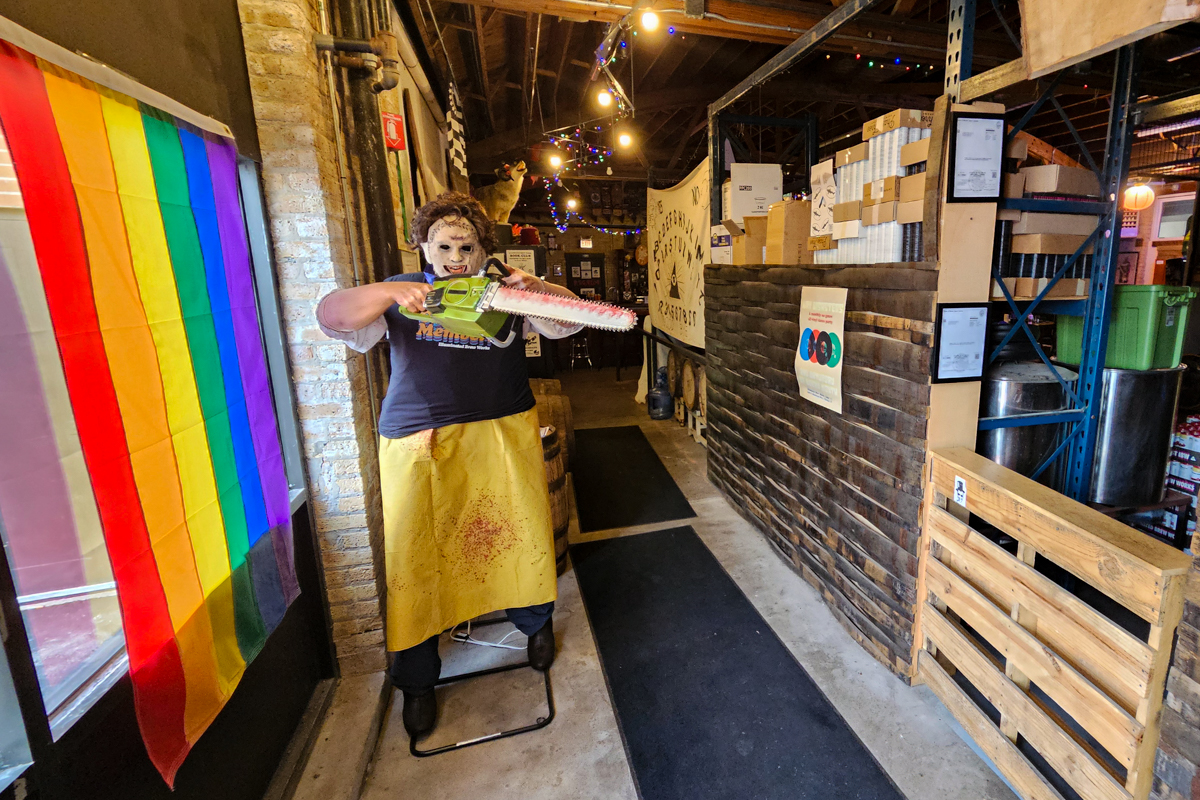
They have a quirky, no-fucks-given vibe that we particularly liked. We may have to bring Cassie and Butters here when it gets warmer.
Beer garden? Yes
Dogs OK? Yes
Televisions? One, avoidable
Serves food? Snacks; BYOF encouraged
Would hang out with a book? Yes
Would hang out with friends? Yes
Would go back? Yes
Metra's new fare structure took effect this morning, along with the planned closure of every ticket window that still existed. It was therefore crucially important that the Ventra app (now the only way to pay for tickets) updated properly overnight. Alas:
Commuters faced an extra headache Thursday as the Ventra app crashed on the first day of new Metra procedures and prices, including the closure of ticket windows.
An alert on the Metra website informs riders that the app is down and technical crews are working to solve the issue.
“It’s not the way we would have liked it to go,” Metra spokesperson Meg Reile said.
Metra is working with Cubic, the company that runs the app, to get it up and running as soon as possible, Reile said.
On my train this morning, the conductor announced that he knew the app was down, so we should enjoy the ride. I expect they lost tens of thousands in revenue today.
As of this writing, the app appears to be working! And I have just purchased my monthly ticket for February.
I'll update the Brews & Choos page later today.
We talk about anthropogenic climate change in human-centric terms: the planet is getting warmer very quickly relative to the historical baseline of 1800 CE. But heat just means energy. A plane flying from Taipei to Los Angeles got some kinetic energy from the warmer Pacific waters this week:
China Airlines Flight 5116 rocketed to a speed of 1,329 km/h as it bolted eastward across the Pacific Ocean on Thursday, potentially breaking informal records for passenger travel. The commercial flight, which departed from Taipei, landed more than an hour early in Los Angeles, propelled by exceptionally strong tailwinds.
A roaring Pacific jet stream, supercharged by the El Niño climate pattern and moving at more than 400 km/h, gave the flight a boost.
China Airlines 5116 flew its route of 11,593 km in just 10 hours 18 minutes, which rounds to an average speed of 1,126 km/h! That’s including takeoff, landing and all the slower points in the journey. (Working against the jet stream, an average westbound flight from Los Angeles to Taipei is usually scheduled for 14 hours 40 minutes.)
That wasn't the only record: Washington DC hit 27°C on Friday, the warmest temperature ever observed there in January.
Unfortunately the same hemispheric weather system making planes go fast and giving the East Coast June-like weather has kept most of the central US in thick fog:
Since Tuesday, record amounts of fog have blanketed the Lower 48 states, lowering visibility, disrupting flights, causing vehicle accidents and even delaying schools.
On Thursday morning, dense fog advisories affected nearly a third of the United States population (more than 100 million people) and parts of 27 states. These advisories covered the entirety of Iowa, Missouri, Louisiana, Mississippi, Illinois, Indiana and Tennessee and portions of many other states from Texas to New York.
Advection fog is the cause. Unlike radiation fog, which typically forms overnight when skies are clear and winds are calm in the spring and fall, advection fog develops when warm, moist air is transported over a layer of cold air near the ground.
Tuesday, Wednesday and Thursday mornings set records for the number of dense fog advisories nationally, according to Daryl Herzmann, a systems analyst who manages a weather hazard database at Iowa State University. Each day surpassed the record set the day before. The fog advisory database dates back to January 2005.
I can confirm it is still foggy in Chicago:
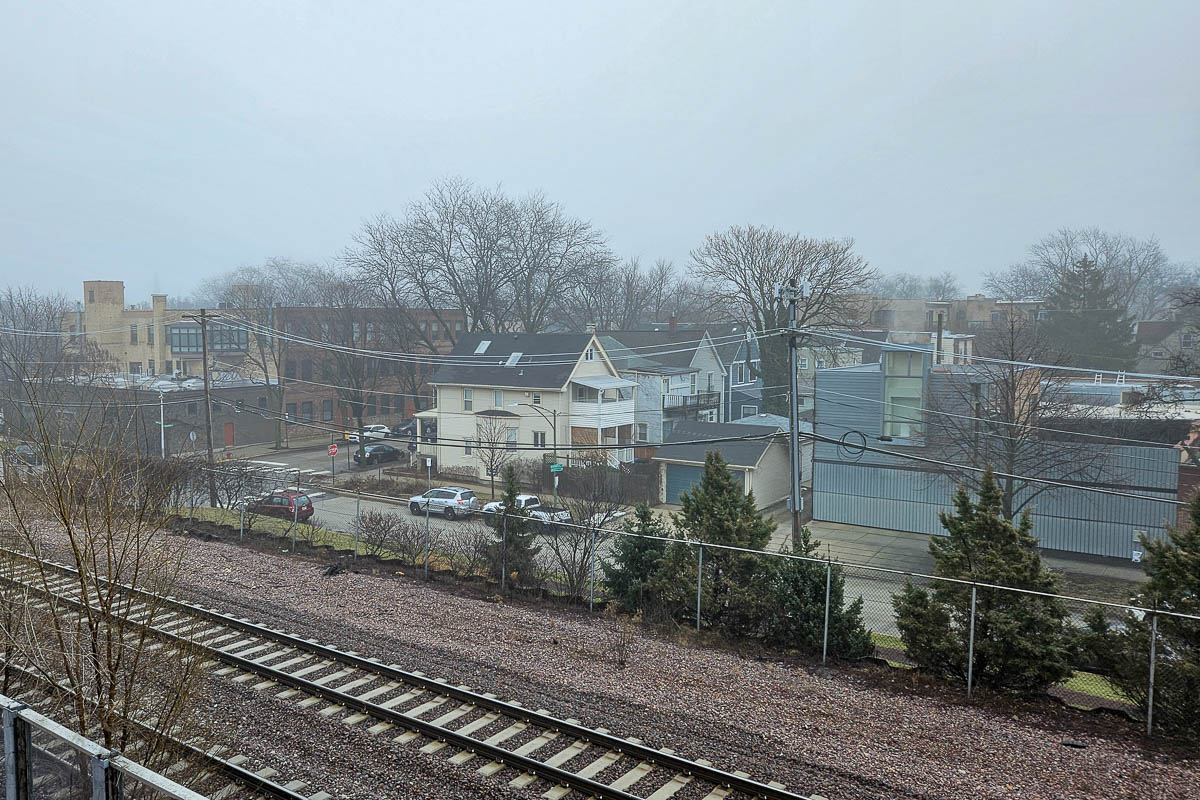
Update: This is all quite a change from 10 years ago today, when the polar vortex visited Chicago with -31°C wind chills.
The New York Times Magazine ran a lengthy story about the scourge of modern robber barons: massive thefts from trains. It turns out, the super-long container trains that the duopoly of railroad companies run throughout the western US don't seem worth defending, unless you talk to the shippers' insurance companies. The threads of early-21st-century corporate amalgamation all kind of come together in this one story:
Some 20 million containers move through the ports of Los Angeles and Long Beach every year, including about 35 percent of all the imports into the United States from Asia. Once these steel boxes leave the relative security of a ship at port, they are loaded onto trains and trucks — and then things start disappearing. The Los Angeles basin is the country’s undisputed capital of cargo theft, the region with the most reported incidents of stuff stolen from trains and trucks and those interstitial spaces in the supply chain, like rail yards, warehouses, truck stops and parking lots. Cases of reported cargo theft in the United States have nearly doubled since 2019....
The most extreme type of modern train theft occurs when thieves cut the air-compression brake hoses that run between train cars, thereby triggering an emergency braking system. When that happens, the engineer stays in the cab and the conductor walks the length of the stopped train, trying to locate the source of the problem. (Thieves can also stop a train by decoupling some of its cars.) Of course, if a train is miles long, that walk takes a while. In the meantime, the pilferers unload.
On the website of Operation Boiling Point, which the Department of Homeland Security recently created to go after organized theft groups, the agency states that cargo theft accounts for between $15 billion and $35 billion in annual losses. The Federal Bureau of Investigation, in a statement emailed to me, estimated that cargo-theft losses amounted to $1 billion nationally in 2021, but the agency acknowledged that that was an undercount.
Over the past decade, in a push for greater efficiency, and amid record-breaking profits, the country’s largest railroads have been stringing together longer trains. Some now stretch two or even three miles in length. At the same time, these companies cut the number of employees by nearly 30 percent, so fewer people now manage these longer trains.
The technology exists to make containers less susceptible to theft. Companies sell container-locking devices with GPS and cellular connectivity that permit the containers to be tracked at all times. Sensors stuck on the freight itself can report locations and precise conditions inside containers, including temperature, humidity and the bumpiness of the ride. Containers can be outfitted with smart seals, motion-detection alarms, video surveillance and infrared imaging systems that can detect intruders’ body heat. And yet, the locks so often used to secure containers with hundreds of thousands of dollars’ worth of merchandise inside are easier to cut off than the lock I use to secure my old beater bicycle.
Why? The answers were varied, but as far as I can tell, the reason is that in the last several decades, the cost of shipping has fallen so much that cheap shipping has become part of the essential energy force pushing the tsunami of low-cost goods across the seas and onto our shores. A company with 20,000 containers might decide it isn’t worth an extra $10 per container for better locks or seals. In part because even if they did opt for the upgraded security, who or what would respond when the alarm goes off or when the smart seal sends notice that it’s been breached?
I would call this a case of seriously misaligned incentives, not to mention a field ripe for the kinds of regulation that made the world a lot less horrific than it was the last time corporations got this big in the 1890s and 1900s.
Perhaps the Republican Party will resume its duties in government soon, so that we can fix some of these problems. Unless, of course, their ineffectuality is a feature, not a bug.
What do you get when you combine a 2°C air temperature, a 2°C dew point, frozen ground with snow patches, and nearly-calm winds? Visibility under 100 meters on my commute to the office:
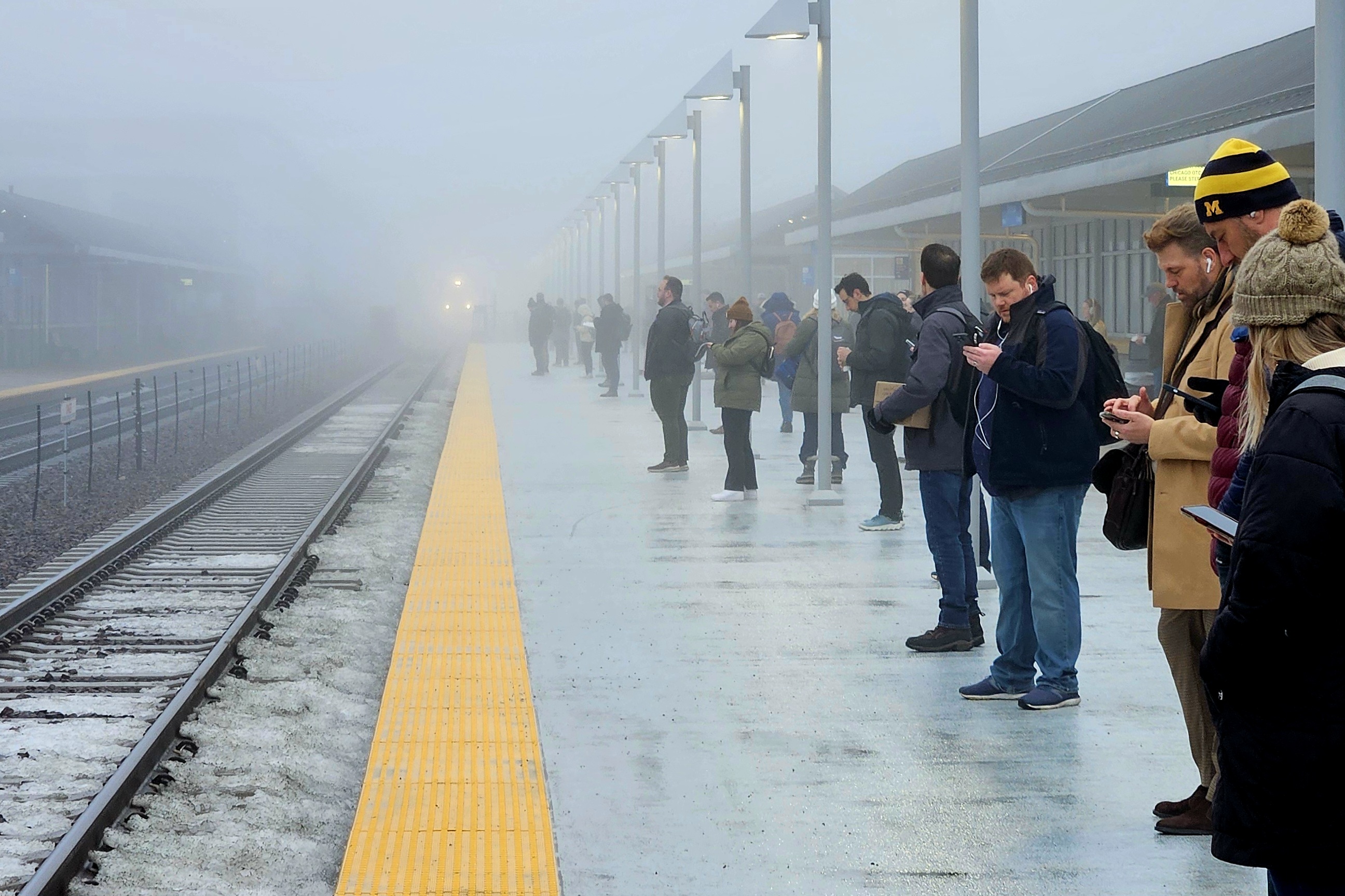
They say we may not see the sun until Wednesday. But they also say it'll be 7°C that day. March came early this year, it seems.
A weather pattern has set up shop near Chicago that threatens to occlude the sun for the next week, in exchange for temperatures approaching 15°C the first weekend of February. We've already had 43 days with above-normal temperatures this winter, and just 12 below normal during the cold snap from January 13th through the 22nd. By February 2nd, 84% of our days will have had above-normal temperatures since December 1st.
Thank you, El Niño. Though I'm not sure the gloominess is a fair exchange for it.
Elsewhere:
Finally, Minnesota-based wildlife photographer Benjamin Olson discovered that a mouse had moved into his car. So naturally, he set up a photo trap. And naturally, it's totes adorbs.